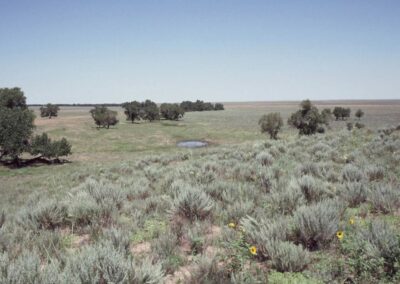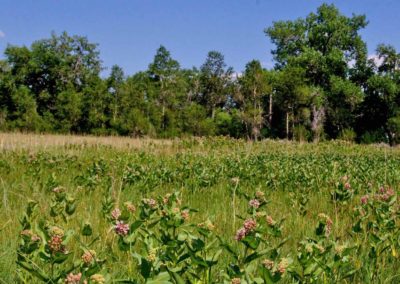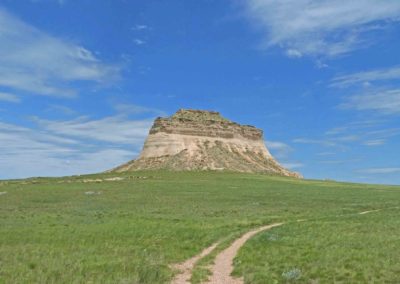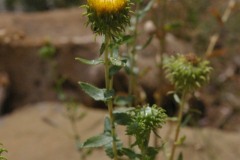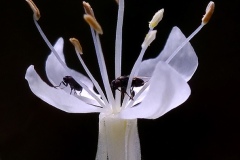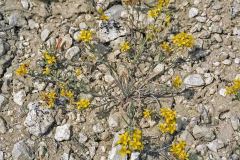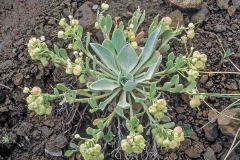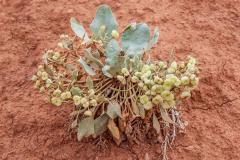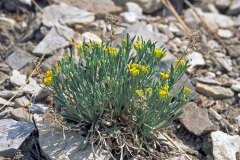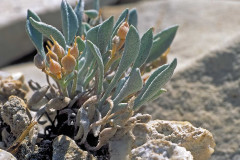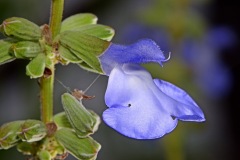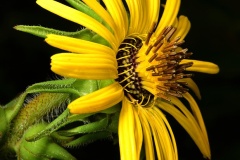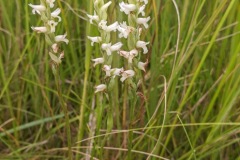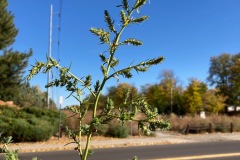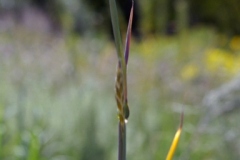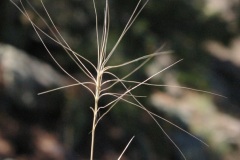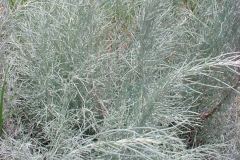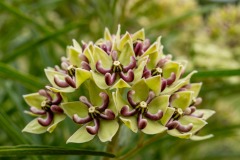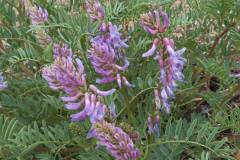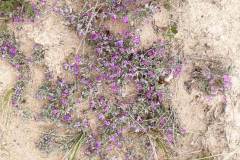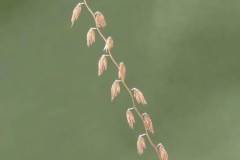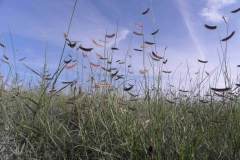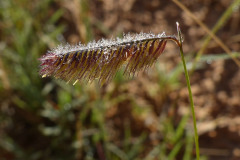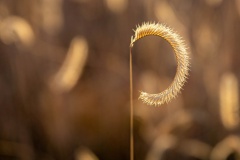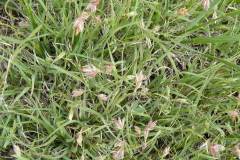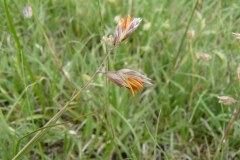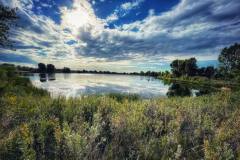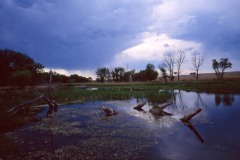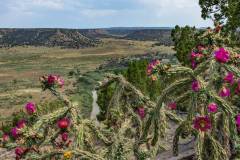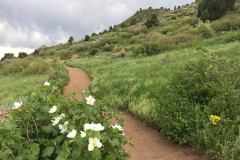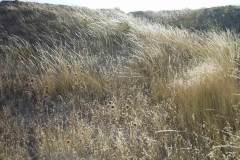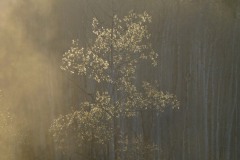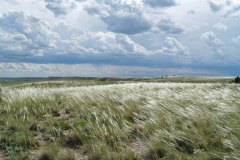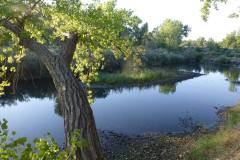Plains Life Zone
It is common for the region to witness night time temperatures dropping below zero, as well as snow
storms, well into May, and the plains occasionally sees snowfall and freezing temperatures as early as September. The region typically has flowering plants from early April through early-to-mid October.
As a result of the semi-arid climate that prevails over much of the plains, the region, outside of riparian zones, is dominated by the shortgrass prairie. Grasses and flowering plants that grow in this arid region are cold hardy, sun loving, extremely drought tolerant, hail resistant, and normally well adapted to alkaline soils. However, the region’s riparian zones, most notably the
– John Sciarcon
Read more about Blue Gramma (Bouteloua gracilis) Colorado's state grass.
According to the BAMONA (Butterflies and Moths of North America) project, Blue grama is a host plant to at least six different kinds of skippers. Additionally, in the winter months it provides habitat for ground nesting insects and cover for small animals.
As a result of its drought tolerance, aesthetic appeal, and deep roots that make it useful in erosion control, blue grama is becoming more common in residential yards along the Front Range. In such a setting, it is quite versatile and can play roles ranging from a stand-alone ornamental to a turf-grass replacement for non-native grasses, at least for full sun areas with low to medium foot traffic.
It is common for the region to witness night time temperatures dropping below zero, as well as snow storms, well into May, and the plains occasionally sees snowfall and freezing temperatures as early as September. The region typically has flowering plants from early April through early-to-mid October.
As a result of the semi-arid climate that prevails over much of the plains, the region, outside of riparian zones, is dominated by the shortgrass prairie. Grasses and flowering plants that grow in this arid region are cold hardy, sun loving, extremely drought tolerant, hail resistant, and normally well adapted to alkaline soils. However, the region’s riparian zones, most notably the areas along the South Platte and Arkansas Rivers, are home to more water loving plants and grasses, which sometimes lack the drought tolerance of those more common on the region’s short-grass prairie. It is also mostly in these riparian zones, as well as along depressions throughout the plains, that the region’s native trees are found.
– John Sciarcon
Read more about Blue Gramma (Bouteloua gracilis) Colorado's state grass.
According to the BAMONA (Butterflies and Moths of North America) project, Blue grama is a host plant to at least six different kinds of skippers. Additionally, in the winter months it provides habitat for ground nesting insects and cover for small animals.
As a result of its drought tolerance, aesthetic appeal, and deep roots that make it useful in erosion control, blue grama is becoming more common in residential yards along the Front Range. In such a setting, it is quite versatile and can play roles ranging from a stand-alone ornamental to a turf-grass replacement for non-native grasses, at least for full sun areas with low to medium foot traffic.
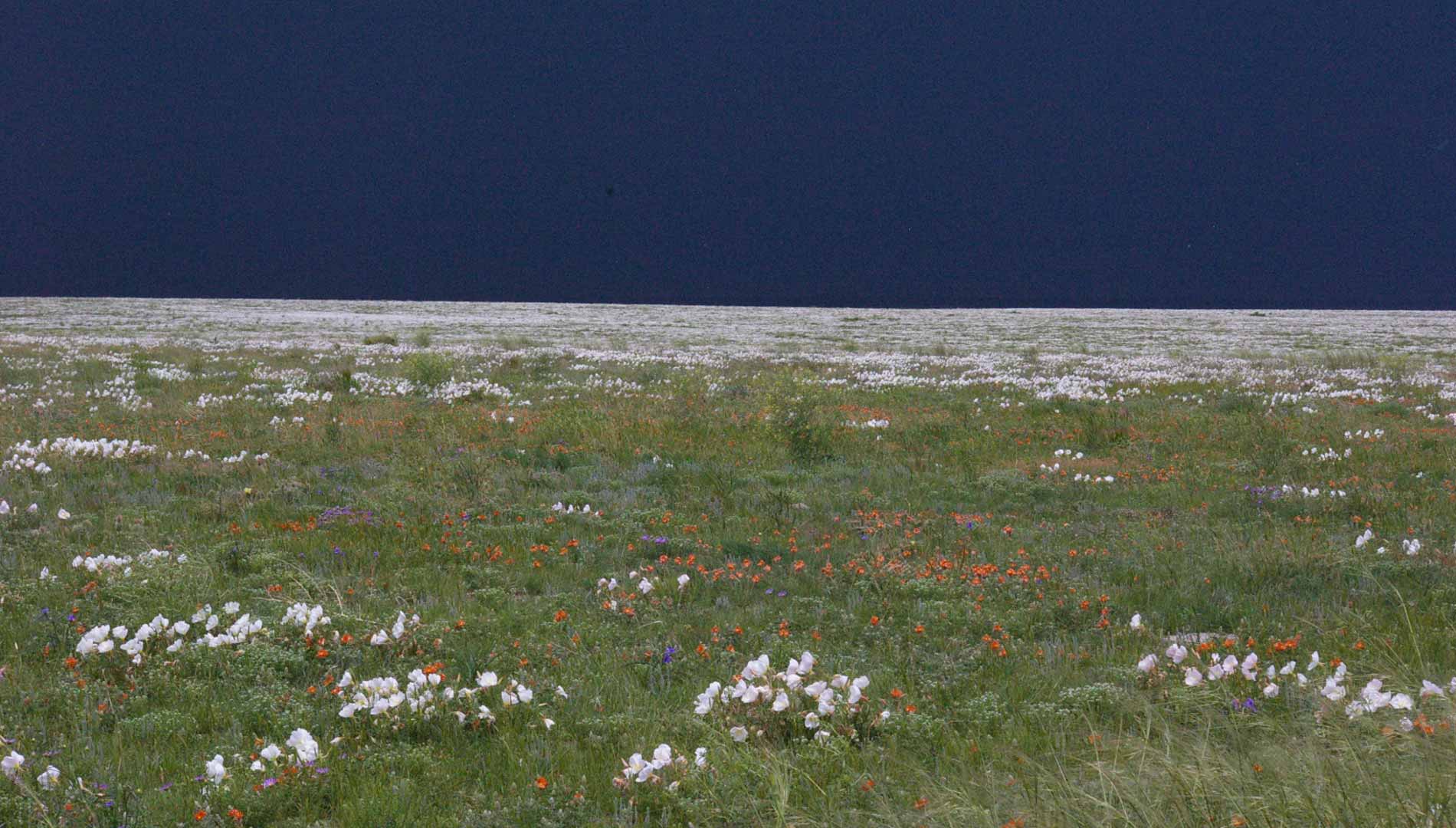
Plant Communities of the Plains Zone
Click on Photo for More Information
Plants of the Plains Zone
Plant photos are in alphabetical order by scientific name.
Click a photo to get started.
Then use the left-right arrow to scroll to the next image.
Click the arrow on the bottom left to see a slideshow.
Click the “i” to see information about the plant.
Click the bottom down arrow remove the thumbnail carousel.
Click on Photo for Large Image
Hold Phone Horizontally for Landscape Photos

